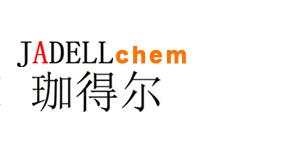| Recombinant Human Interleukin-8/CXCL8, 72a.a. 是促炎性CXC趋化因子,与促进中性粒细胞趋化性和脱颗粒有关。 Synonyms
rHuIL-8/CXCL8, 72a.a.; C-X-C motif chemokine 8; MDNCF; Emoctakin; NAP-1 ; 重组人白细胞介素- 8/CXCL8,72a.a.
Species
Human Source
E. coli Accession
P10145 Gene ID
3576 Molecular Weight
Approximately 8.4 kDa AA Sequence
SAKELRCQCI KTYSKPFHPK FIKELRVIES GPHCANTEII VKLSDGRELC LDPKENWVQR VVEKFLKRAE NS Biological Activity
The ED50 is <20 ng/mL as measured by CHO cells transfected with human CXCR1, corresponding to a specific activity of >5 × 104 units/mg. Appearance
Lyophilized powder. Formulation
Lyophilized after extensive dialysis against PBS. Endotoxin Level
<0.2 EU/μg, determined by LAL method. Reconstitution
Reconstitute the lyophilized recombinant Human Interleukin-8/CXCL8, 72a.a. (rHuIL-8/CXCL8, 72a.a.) to 100 µg/mL using ddH2O. Storage & Stability
Lyophilized recombinant Human Interleukin-8/CXCL8, 72a.a. (rHuIL-8/CXCL8, 72a.a.) is stored at -20°C. After reconstitution, it is stable at 4°C for 2 weeks or -20°C for longer. It is recommended to freeze aliquots at -20°C or -80°C for extended storage. Shipping
Room temperature in continental US; may vary elsewhere. Background
Interleukin-8 induces the full pattern of responses observed in chemotactically stimulated neutrophils, i.e., activation of the motile apparatus and directional migration, expression of surface adhesion molecules, release of storage enzymes, and production of reactive oxygen metabolites[1]. Human recombinant IL-8 is potently angiogenic when implanted in the rat cornea and induced proliferation and chemotaxis of human umbilical vein endothelial cells[2]. |



